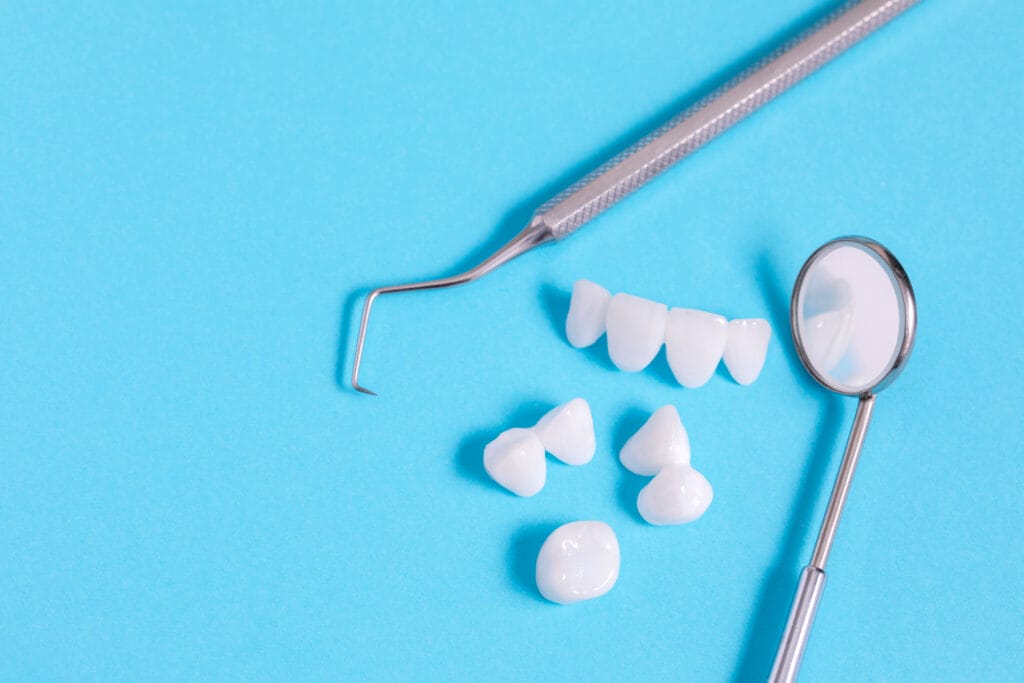Understanding Dental Crowns
Dental crowns, also known as caps, are prosthetic devices placed over damaged teeth to restore their shape, size, and strength and improve their appearance. They encase the visible portion of the tooth above the gum line, protecting it from further damage. Crowns are commonly used after procedures like root canals or when a tooth has significant decay. They play a crucial role in preserving oral health by providing structural support to weakened teeth. Dental technicians craft these crowns from various materials, including metal, resin, and porcelain, and can last between five and 15 years with proper care.
Identifying the Need for a Dental Crown
Dental crowns are often necessary to address various dental issues. Common signs indicating the need for a dental crown include severe tooth decay, cracked or broken teeth, and the aftermath of root canal therapy. If you experience discomfort while chewing, swelling around a tooth, or sensitivity to hot or cold foods, consult your dentist. These symptoms might signify the need for a dental crown to restore the tooth’s function and aesthetics. Regular dental checkups can help identify such issues early on.
Common Signs That You May Need a Dental Crown
Sensitivity to hot or cold, sharp pain while chewing, or visible cracks in a tooth are common signs that you may need a dental crown. These issues often indicate underlying problems like severe decay or a fractured cusp, necessitating prompt dental intervention. If you experience these symptoms, it is essential to consult your dentist for a thorough evaluation and potential crown placement to prevent further complications. Early detection can help address concerns before they escalate.
Common Reasons for a Dental Crown
Severe tooth decay that can’t be managed with fillings, cracked or broken teeth, and the necessity for dental crowns after root canal therapy are common reasons for needing a dental crown. Additionally, for cosmetic purposes, dental crowns can enhance the aesthetics of your smile and provide a natural look.
Severe Tooth Decay and Its Management
If left untreated, tooth decay can progress to a severe stage, necessitating a dental crown. When decay penetrates deep into the tooth, causing significant damage to the enamel and pulp, a crown becomes essential for restoration. Managing severe tooth decay involves removing the decayed portion, shaping the tooth, and placing a crown to protect and strengthen it. This procedure not only restores functionality but also prevents further damage.
Cracked or Broken Teeth Solutions
Dental crowns can offer effective solutions if you have cracked or broken teeth. By restoring the tooth’s structure, dental crowns help in chewing and alleviate discomfort. Depending on the severity, your dentist may recommend different materials for the crown, such as porcelain or ceramic, to ensure durability and aesthetics.
Dental Crowns After Root Canal Therapy
Root canal therapy often weakens the tooth structure, necessitating a dental crown. These crowns offer durability and support, safeguarding the treated tooth from further complications.
Enhancing Aesthetics with Cosmetic Crowns
Cosmetic crowns are a popular choice for enhancing the aesthetics of your smile. These crowns are specially designed to match the color, shape, and size of your natural teeth, providing a seamless and appealing look. By improving the appearance of teeth with imperfections, such as discoloration, gaps, or misalignment, cosmetic crowns can boost your confidence and overall self-esteem. Whether you’re looking to rejuvenate your smile for personal reasons or professional purposes, cosmetic crowns offer a versatile solution for achieving a beautiful and radiant smile.
Exploring Treatment Options and Alternatives
When it comes to dental crowns, understanding treatment options and alternatives is crucial. Dentists assess various factors to determine the most suitable approach. In some cases, alternative treatments may be available depending on the severity of the condition. Exploring different options ensures that the best course of action is chosen for optimal oral health. Collaboration between patients and dental professionals guides the selection of the most effective treatment plan.
How Dentists Determine the Need for a Crown
To determine if a dental crown is necessary, dentists assess factors like extensive tooth decay, cracked or weakened teeth, or whether a tooth needs reinforcement post-root canal therapy. They consider the extent of damage, location in the mouth, and overall oral health. X-rays help reveal how much of the tooth pulp is affected, aiding in the decision-making process. Additionally, dentists evaluate if the tooth can support a crown structurally and if other treatments could be more beneficial. This comprehensive assessment ensures the most appropriate treatment is recommended.
Alternative Treatments to Dental Crowns
When considering dental issues, alternative treatments to dental crowns are available. For cases where crowns may not be the optimal solution, your dentist could recommend options like dental fillings, veneers, or even dental bridges. These alternatives provide different approaches to address specific dental concerns, ensuring personalized care tailored to your needs and preferences. Exploring these options with your dental provider can lead to finding the most suitable treatment plan for your oral health journey.
The Process of Getting a Dental Crown
The process of getting a dental crown involves several steps. First, the dentist examines your tooth to check for any underlying issues. Next, they prepare the tooth by reshaping it to accommodate the crown. An impression of the tooth is taken to ensure a proper fit. A temporary crown may be placed while the permanent one is being made. Once ready, the permanent crown is cemented onto the tooth, restoring its functionality and appearance. Regular check-ups are essential to monitor the crown’s condition.
What to Expect During the Procedure
During the dental crown procedure, your dentist will first numb the area to ensure your comfort. They will then shape the tooth to make room for the crown. An impression of the prepared tooth will be taken to customize the crown specifically for you. A temporary crown may be placed while you wait for the permanent one. On your next visit, the permanent crown will be placed, adjusted, and cemented securely. Expect minimal discomfort and a renewed smile post-procedure.
Post-Procedure Care and Maintenance
After getting a dental crown, it’s vital to maintain proper post-procedure care. Avoid hard, sticky foods and opt for softer options to prevent any damage. Practice good dental hygiene by gently brushing around the crown area and using mouthwash to keep bacteria at bay. Be cautious with hot and cold foods initially. Remember to floss between your teeth and around the crown to remove any food particles and plaque buildup. If you experience any discomfort or swelling, consult your dentist promptly. Regular dental checkups are crucial to ensure the crown’s longevity and address any issues promptly.
If You Think You May Need a Crown, Don’t Wait
Schedule an appointment with Creekside Family Dental online or by phone. Our team of dentists can identify any issues with your smile and determine if a crown is the best fix.


 Meet Dr. Leffler
Meet Dr. Leffler
 Meet the Team
Meet the Team
 Dental Membership Plan
Dental Membership Plan
 Insurance Information
Insurance Information
 Patient Forms
Patient Forms
 Online Bill Pay
Online Bill Pay
 Your First Visit
Your First Visit





